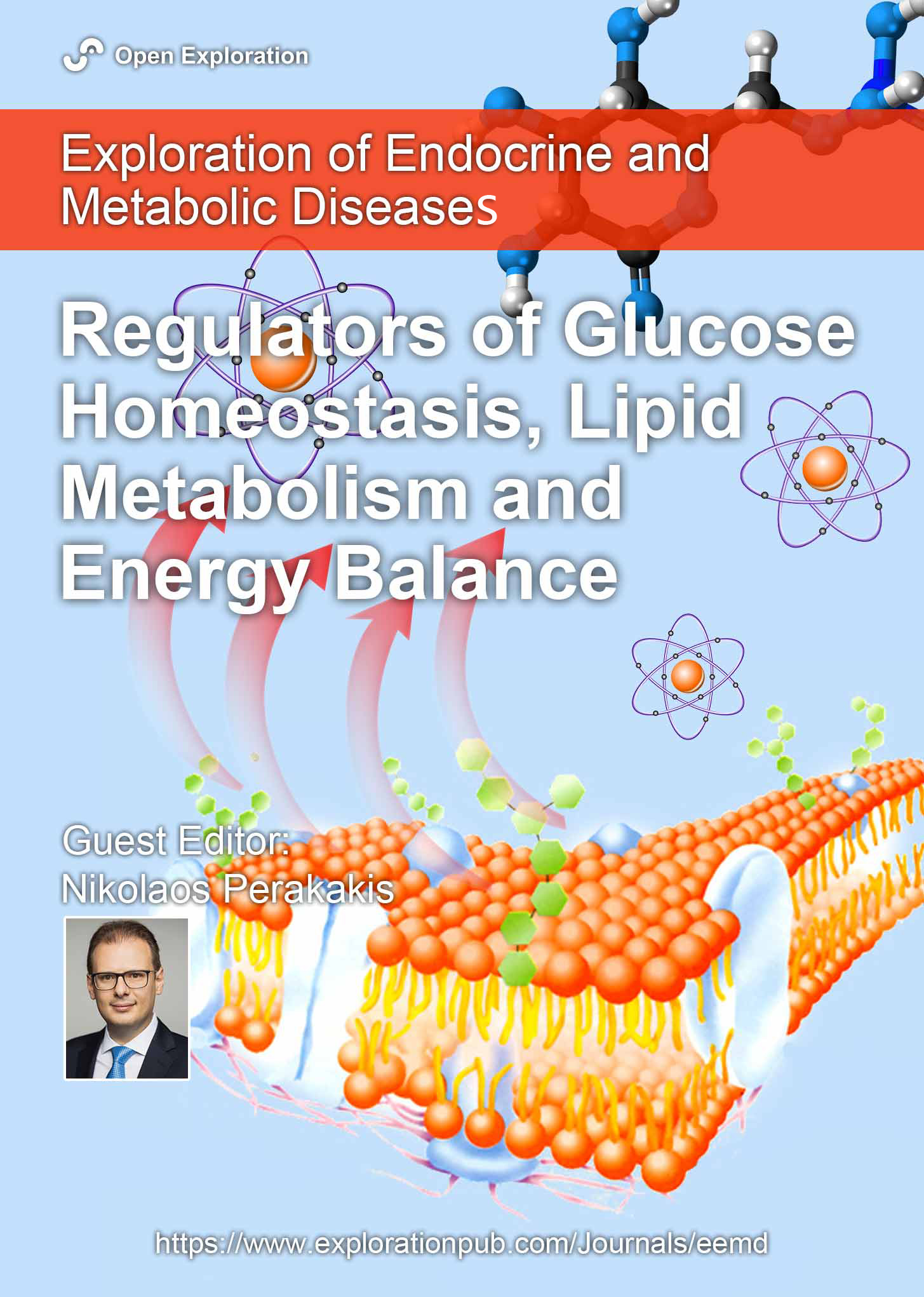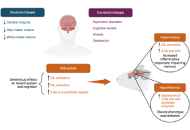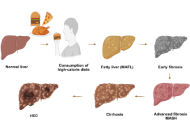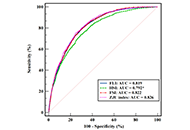-
 Special Issue Topic
Special Issue TopicRegulators of Glucose Homeostasis, Lipid Metabolism and Energy Balance
Submission Deadline: July 03, 2025Guest Editor
Nikolaos Perakakis E-Mail
Head of Metabolic and Vascular Medicine and Director of University Clinical Study Center for Metabolic Diseases of Department of Internal Medicine III at University Hospital Carl Gustav Carus of Technische Universität Dresden, Dresden, Germany.
Research Keywords: metabolism; diabetes; NAFLD; obesity; NASH
About the Special Issue
Metabolic diseases are among the leading causes of death worldwide. They result from the disruption of energy balance, glucose homeostasis and lipid metabolism. Pancreas, liver, adipose tissue, gut and brain are among the organs that have a key role in maintaining metabolic health. Furthermore, a significant cross-talk between these metabolic organs occurs that further contributes to energy, glucose and lipid balance. Proteins-hormones, lipids, sugars, extracellular vesicles, micro-RNAs, immune cells are among the biomolecules that may act as regulators of metabolic health by coordinating the cross-talk between organs. These biomolecules may thus either be used as biomarkers for predicting metabolic disease development and progression as well as they may serve as candidate targets for development of effective treatments.
In this Special Issue, we invite the submission of original research (basic, clinical and epidemiological studies), review and meta-analysis articles on possible regulators of glucose homeostasis, energy balance and lipid metabolism. Topics of interest include: a) Novel diagnostic and prognostic biomarkers of metabolic diseases, such as diabetes and its complications, non-alcoholic fatty liver disease, obesity, cardiovascular diseases, b) Studies summarizing current evidence about the diagnostic and therapeutic role of adipokines, hepatokines, gut-secreting hormones, extracellular vesicles, lipid species, c) Impact of non-pharmacological and pharmacological interventions on regulators of metabolic health, d) Description of the role of regulators of metabolic health in different patient subgroups (such as sex-based differences, age-based differences).
Keywords: diabetes; obesity; NAFLD; NASH; hormones; glucose; miRNAs; appetite
Call for Papers
Published Articles
 Circulating endocannabinoids and brain anatomy: unraveling the weight loss connection through lifestyle and surgery approachesOpen AccessReviewObesity is a multifactorial disease linked to many comorbidities and has an impact on brain health. It is also known that obesity disrupts the endocannabinoid (eCB) system in the central nervous sys [...] Read more.Gabrielle St-Arnaud ... Vincenzo Di MarzoPublished: April 07, 2025 Explor Endocr Metab Dis. 2025;2:101427
Circulating endocannabinoids and brain anatomy: unraveling the weight loss connection through lifestyle and surgery approachesOpen AccessReviewObesity is a multifactorial disease linked to many comorbidities and has an impact on brain health. It is also known that obesity disrupts the endocannabinoid (eCB) system in the central nervous sys [...] Read more.Gabrielle St-Arnaud ... Vincenzo Di MarzoPublished: April 07, 2025 Explor Endocr Metab Dis. 2025;2:101427
DOI: https://doi.org/10.37349/eemd.2025.101427 Significance of FXR agonists in MASLD treatment: a deep dive into lipid alteration by analytical techniquesOpen AccessReviewMetabolic dysfunction-associated steatotic liver disease (MASLD) is rapidly emerging as a global health crisis, affecting over 30% of the population and demanding urgent attention. This redefined co [...] Read more.Pirangi Srikanth ... Sukhendu NandiPublished: March 25, 2025 Explor Endocr Metab Dis. 2025;2:101425
Significance of FXR agonists in MASLD treatment: a deep dive into lipid alteration by analytical techniquesOpen AccessReviewMetabolic dysfunction-associated steatotic liver disease (MASLD) is rapidly emerging as a global health crisis, affecting over 30% of the population and demanding urgent attention. This redefined co [...] Read more.Pirangi Srikanth ... Sukhendu NandiPublished: March 25, 2025 Explor Endocr Metab Dis. 2025;2:101425
DOI: https://doi.org/10.37349/eemd.2025.101425 Four hepatic steatosis indices in predicting quantitative computed tomography-based metabolic dysfunction-associated fatty liver diseaseOpen AccessOriginal ArticleAim: To evaluate the prediction ability for quantitative computed tomography (QCT)-based metabolic dysfunction-associated fatty liver disease (MAFLD) of four widely known hepatic steatosis algori [...] Read more.Bingwu Xu ... Yong ZhangPublished: May 23, 2024 Explor Endocr Metab Dis. 2024;1:62–76
Four hepatic steatosis indices in predicting quantitative computed tomography-based metabolic dysfunction-associated fatty liver diseaseOpen AccessOriginal ArticleAim: To evaluate the prediction ability for quantitative computed tomography (QCT)-based metabolic dysfunction-associated fatty liver disease (MAFLD) of four widely known hepatic steatosis algori [...] Read more.Bingwu Xu ... Yong ZhangPublished: May 23, 2024 Explor Endocr Metab Dis. 2024;1:62–76
DOI: https://doi.org/10.37349/eemd.2024.00008 -
-
Ongoing Special Issues